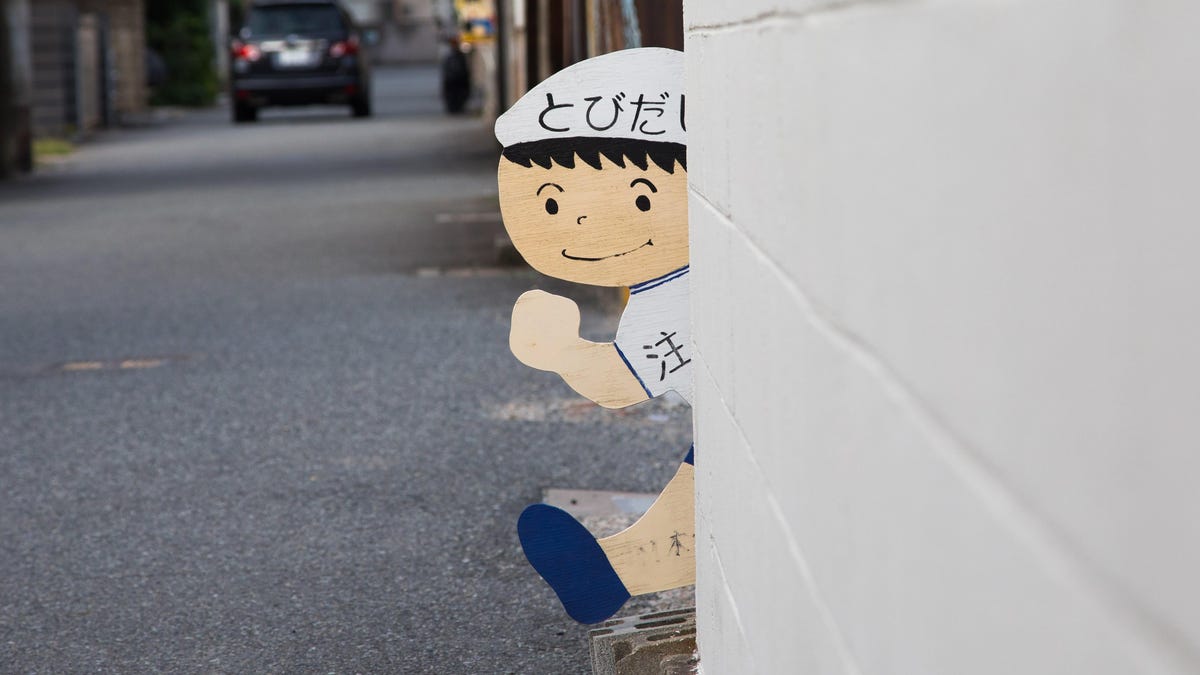Tucked next to roads running through school zones in Japan are some hand-painted mascots known as “Tobita-kun, or more formally, “Tobidashi Bōya,” which means “running boy.” These signs are reminders for local drivers to slow down, and according to Atlas Obscura, they helped in Japan’s so-called Traffic War.
The Traffic Wars is a name given to the period of the 1950s and ’60s where traffic fatalities rocked the island nation. Pair a booming economy with roads full of fledgling drivers and rudimentary automotive technologies, and you have a recipe for disaster. There were plenty of ways that Japan eased the chaos on the roads, such as with incredible public transit networks, a ban on street parking, mandates requiring smaller vehicles — and those aforementioned road signs.
The first “running boy” sign was designed by Yasuhei Hisada for the city council of Yokaichi, Shiga Prefecture. The charming design included a young boy poking his head and part of his body out into traffic — a reminder for drivers to be aware of any foot traffic darting out into the roadway. The mascot quickly grew in popularity, becoming mandated by plenty of local towns and neighborhoods.
From Atlas Obscura:
While Tobita-kun reflects Japan’s efforts toward traffic safety, and is undoubtedly an iconic figure, the direct impact of the signs is unknowable. Asked about their impact, a spokesperson for the Japan Automobile Federation noted “[The JAF] has not formally investigated the effect,” and cannot definitively quantify their impact.
Indeed, Tobita-kun seems to be one of many factors that helped decide Japan’s traffic war.
[…]
Public safety campaigns for motorists are also common. “On a nationwide and ongoing basis, we are implementing a project called ‘Omoiyalty Drive,’” writes the JAF spokesperson in an email. Translated approximately as “compassionate” or “thoughtful” driving, the initiative is described as a “caring project” designed to reinforce patience, good manners, and traffic etiquette among motorists and pedestrians.
Combined, the measures have been effective. Road fatalities in Japan have declined to just 25 percent of peak 1970 figures, according to the NILIM.
Japan is a country that loves its mascots, but those mascots often represent a cultural affection — be it for a particular city, or even for the children that might pop out into traffic near a school zone. Tobita-kun might not have solved all of Japan’s traffic problems, but it did provide a rallying point around which Japanese citizens could focus their intentions for change.

